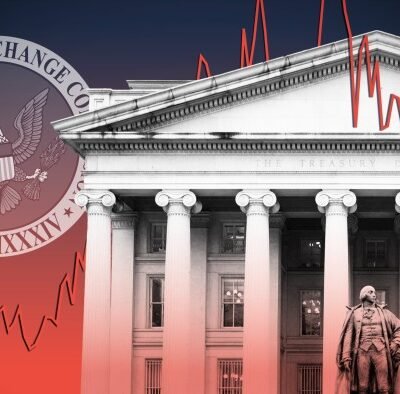Despite myriad government policies, investor reporting requirements, and operational benefits driving the demand for whole-building utility data, the real estate sector still has difficulty getting the information from utilities.
“Utility information is power,” says Jess Bissey, managing director and chief resilience officer at AEW Capital Management. “We leverage this information for both risk management and value creation. As regulatory transition risk ramps up in the form of building performance standards that carry the possibility of financial penalties, having access to reliable whole-building data is crucial for us to evaluate and mitigate exposure. Comprehensive and timely data also enhances our ability to target strategic initiatives and more confidently measure the impact of building improvements over time.”
When owners are held responsible for whole-building energy performance but have only operational control over certain meters in a multi-tenant structure, things get tricky. There is no consistently simple or easy access to aggregated energy use for a building, especially when individually metered tenant spaces aren’t billed to the owner.
“Whole-building data access is paramount for . . . owners being aware of their buildings’ impact to the environment,” says Don Brooks, director of sustainability at Crow Holdings. “Transparency allows building owners to take action to improve building design and operations, which is valuable for all stakeholders. Building owners can measure their environmental impact, tenants get a better-performing building for reduced [operating expenditure], and grid stability support for utility providers so they can better serve customers for a more sustainable future.”
In some areas that have mandatory benchmarking ordinances in place, utilities have been ordered to provide owners aggregated energy data for multi-tenant buildings. In other cases, owners ask their tenants to sign utility letters of approval for owners to have access the tenant data (see the ULI primer “Sharing Data to Achieve Net Zero“). Some owners are including green lease clauses that require tenants to share utility data, so that owners can collect whole-building usage on their own. More often than not, owners end up estimating tenant energy consumption and making business decisions based on incomplete information.
“For real estate, whole-building utility data is the backbone of a robust ESG strategy, and obtaining it has been a struggle for decades,” says Jack Davis, vice president of ESG strategy at Conservice. “Green leasing strategies and local regulations placed on utilities have helped some, but it’s still a market-wide challenge.”
The industry is riding a wave of initiatives to address this challenge. From government agencies to utility bill-pay companies to nonprofits—stakeholders nationwide are working different angles to acquire that elusive, whole-building data:
1. The U.S. Department of Energy, Environmental Protection Agency, and Department of Housing and Urban Development released a joint letter, in January 2024, asking utility companies to make energy and water use data available for multifamily properties. The leaders of three federal agencies joined forces to seek data that will facilitate green upgrades to the nation’s housing stock.
“Thanks to the president’s Inflation Reduction Act, we are investing billions in much-needed energy efficiency upgrades at the properties . . . many of our most vulnerable populations call home,” said (now former) HUD Secretary Marcia L. Fudge. “To do that, we need to provide the properties we serve with accurate data. Today, we join the DOE and EPA to ask utility companies to help us by making information available on energy and water usage for all.”
2. The U.S. Environmental Protection Agency is also launching a campaign to expand access to whole-building energy data by assisting building owners in making the case to utilities about why they need the data. The campaign has four components:
· Gather input from building owners and others on where they need this data most and why (complete).
· Create resources that summarize the issue and that support building owners in engaging utilities nationwide. This step will include a resource that summarizes input received in Part 1 (ongoing).
· Organize meetings between utilities and building owners in priority locations to facilitate discussion. The meetings will also be based on building owner commitments to participate.
· EPA will support interested utilities on providing the data in line with industry best practices.
“For more than two decades, the U.S. EPA’s Energy Star program has promoted energy benchmarking as the critical first step to improving the energy performance of commercial and multifamily buildings,” explains Mike Zatz, manager, Energy Star Commercial Buildings, at U.S. Environmental Protection Agency. “This concept has firmly taken hold across commercial building sectors, but for owners of multi-tenant buildings where tenants are billed directly by the utility, benchmarking is often impossible because the owner doesn’t have insight into the total energy use of their building.” He adds that, “As part of a new campaign to connect building owners with utility decision-makers in a series of working meetings, EPA has developed resources highlighting the need for this data and the solutions being used by more than 75 utilities around the country to provide it.”
3. ESG software companies and utility bill-pay providers such as Conservice are uniquely positioned in the private sector to capture the attention of utilities due to their size as a utility customer. Their strategic conversations with utilities on behalf of their clients bring hope to a fractured industry desperate for whole-building utility data.
“Recently, the Conservice team . . . decided to go directly to the source and engage . . . utilities on ways to break the logjam,” says Conservice’s Davis. “The ‘ah-ha’ moment was when we tallied up how much call center volume we were driving to utilities on behalf of our clients. It became obvious that not only could we streamline our data management processes, but we also could reduce customer service expenses on the utility side. That finally got some attention.” He also notes, “So, now Conservice is developing a utility partner program, looking to engage utilities directly and find win-win solutions. We’re hopeful that this [approach] will bear fruit soon . . . .”
4. Nonprofits are joining forces, as did Institute for Market Transformation and the Regulatory Assistance Project to publish a Model Utility Data Access Law. The model legislative framework and guidance came together by incorporating best practices from existing laws, and with input from more than 30 diverse stakeholder organizations, to bring a dual focus: promoting utility savings while concurrently safeguarding the privacy and security of ratepayers’ information.
“Our model utility data access law addresses a critical market need identified by policymakers and building owners,” says Cliff Majersik, senior advisor at IMT. “If adopted widely, this model law could transform the market by standardizing data access across states, accelerating building performance improvements, and driving significant investment in energy efficiency. We envision it as a powerful starting point for all 50 states to advance building energy transparency and decarbonization efforts.”
Utilities are still waking up to this new customer demand for aggregated building energy data. In the past, customers just paid their bills, and that was that. Today, customers expect much more from a utility than they did previously, including whole-building data—but also more granular 15-minute-interval data, real-time carbon emissions data, among other such insights.
Time will tell how these initiatives perform, but utilities would best serve the real estate industry by aggregating whole-building data for some of their largest customers.





